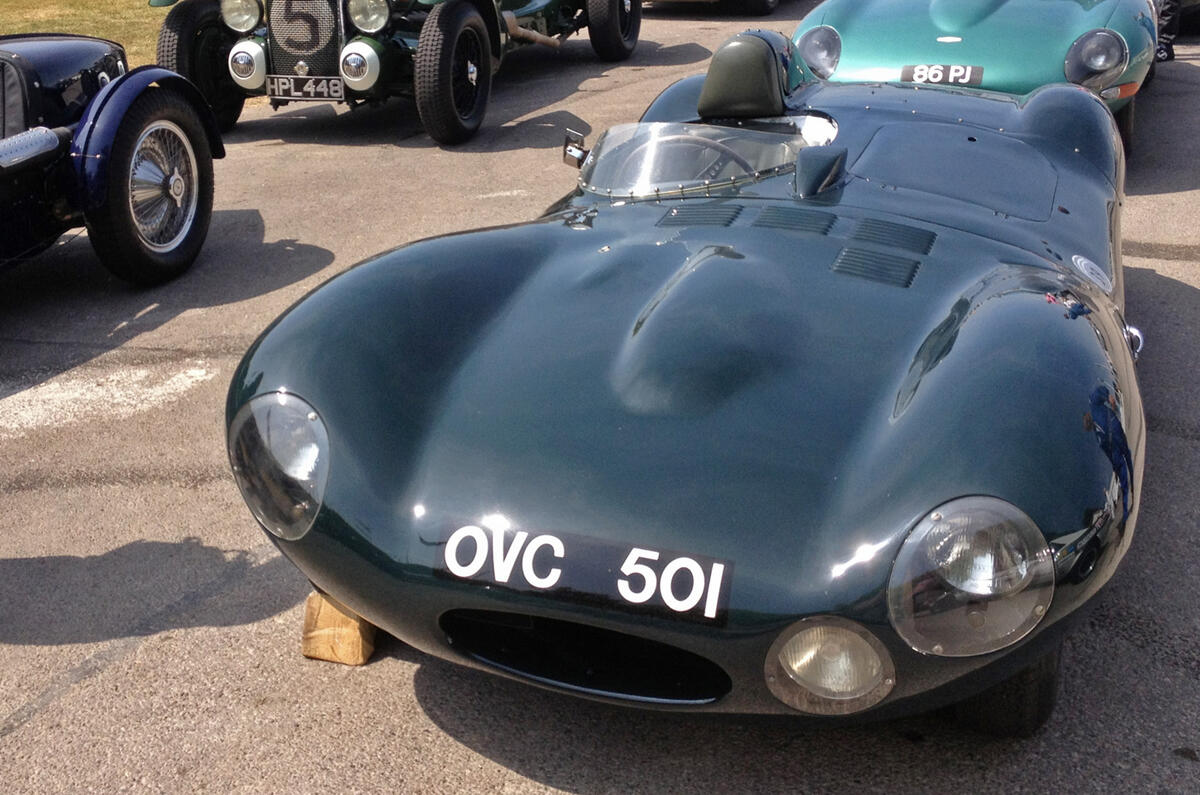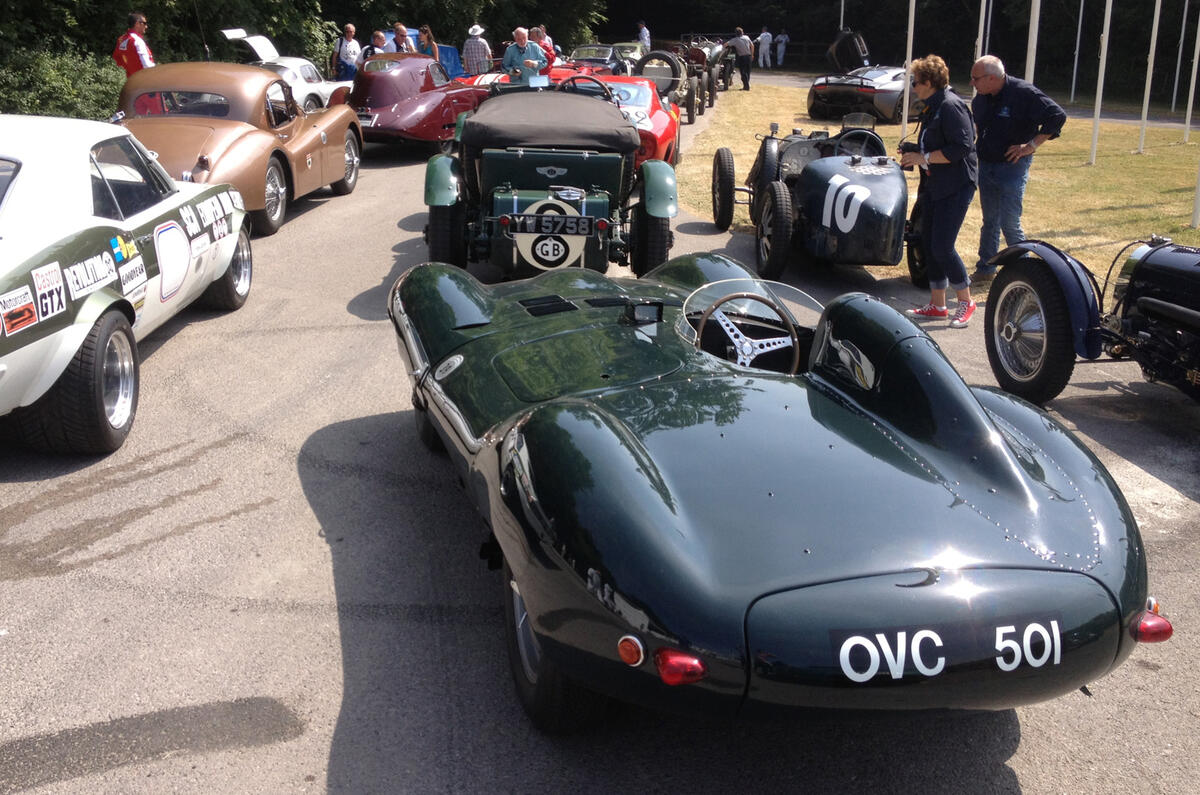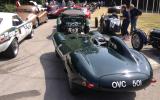“Did you have some kind of problem?” asks Tony Dron, writer, racer and, it must be said, a little bit of a personal hero.
The poor bloke had just been forced to follow me up Goodwood Hill, having made up the 30sec gap to me in about three corners. I had, essentially, ruined his run, yet here he was, the perfect gentleman and perhaps a little bit disbelieving that a healthy car could be driven so slowly.
Of course, there had been no problem. Just the pressure of being entrusted the first and probably most original Jaguar D-type ever to drive up the hill.
It was only my second ever run up the hill, and as I was preparing to leave the line one of the tireless Jaguar Heritage workers lent across and, calm as you like, said “If we sold it tomorrow it’d be worth five to seven million, so please be careful.”
So careful I was. Pathetic, I know, but I figured everyone would be more impressed by the car than my driving, so it would be best to potter up (and down) without risking anything. So it was a gentle run off the line and cruise up the hill in OVC 501, the very first D-type ever built, and a car that started a revolution.
Why so? It used advanced monocoque technology, aero engineering produced the now iconic bodyshape, and its XK engine was capable of accelerating it to more than 170mph.
Word is this car was driven from the factory to the Le Mans test session in 1954, where Norman Dewis promptly broke the lap record by five seconds. On the spot, three more D-types were built for the race proper, giving this car a place in the history books.
Some car, some history. Shame about the driver.







Join the debate
Add your comment
' Slow and steady wins the
' Slow and steady wins the race ', or perhaps ' the tortoise and the hare '. Only stupid drivers crash cars, and then winge about it, later in the paddocks.